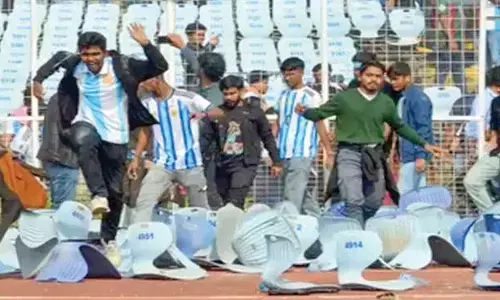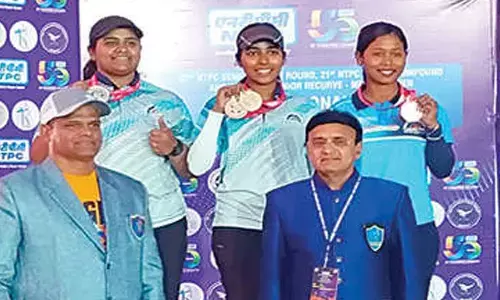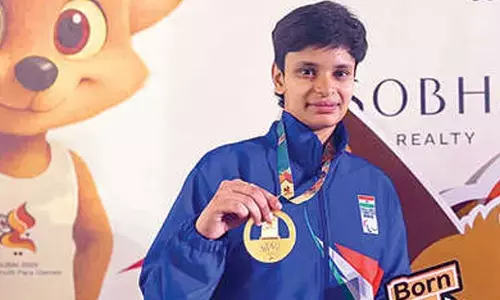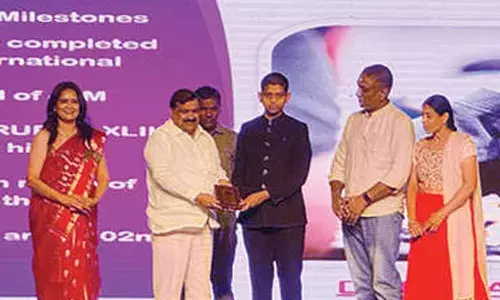Exploring contrasts in classical dance

Renowned dancers Dr Sindhuja and Dr Smitha Madhav presented a captivating showcase in Hyderabad, juxtaposing the distinctive styles of Bharatanatyam and Kuchipudi, highlighting their unique expressions and cultural narratives
An effort to explore the differences and similarities in the two art forms of classical dance, Bharatanatyam and Kuchipudi, was made by juxtaposing similar items in both repertoires. This novel program took place in the intimate space at Lamakaan, Banjara Hills, Hyderabad. The artistes, Sindhuja and Smitha Madhav, are
Doctorate holders from the University of Hyderabad and well-established in their respective fields of Kuchipudi and Bharatanatyam.
Their mastery over these styles enabled them to select items which would have the maximum scope to bring out the intent of the program. A lot of intense thought went into this selection process, as could be understood from the recitals as they proceeded. Being from different historical backgrounds and geographies, the format of the dances was not so readily available to cull appropriate pieces.
However, within the limits of the practicable, the effect produced was appreciated and applauded, enabling rasikas to hone their aesthetic abilities of
discernment which are essential for a deeper and thorough understanding of these art forms.
Blue was the dominant colour of the costumes. Smitha Madhav performed the Dhvani Pradamba Pancharatna Stotram presented in Kautuvam format. A Sanskrit piece in praise of the Goddess Parvati as the presiding Deity at Tirukollaka. The consort of Tala Pureeswara was praised. Smitha’s nritta was chiselled as a sculptor’s tool to evoke the magnificence of Devi. The jathis were crisp and impeccable. Anga shuddhi was excellent in flawless movements.
Sindhuja took on the Prahlada Pattabhishekam Shabdam as a counterpoint with its intense dramatic effects. We could see Hiranyakasipu standing rigidly in penance being approached by Brahma, the bestower of boons. The wishes sought by the Demon King are impossible conditions for his own destruction thus ensuring immortality.
Ironically, a staunch devotee of the Lord who is the mortal enemy of his Father is born into the Rakshasa lineage. Obviously enraged, Hiranyakasipu tries to kill his own son Prahlada through various means. He challenges his unscathed son to show him the Hari he claims is his protector. Sindhuja realistically depicted the scene of the pillar breaking through which erupts the fierce Narasimhavatara as the Lord in tremendous rage appears to kill Haranyakasipu. A gruesome scene ensues as the foe’s entrails are removed by the Lord. Sindhuja excelled in this scene as the fearsome incarnation thrilling the audience. Prahlada is then coronated. Bhayanaka, Raudra, and then Shantam were masterly depicted in her abhinaya.
The popular Telugu pada varnam “Chalamela” praising Lord Ranganatha was a long piece requiring considerable effort and stamina to go through all the charanams.
The silhouetted pose of Ranganatha was like an iconic sculpture in its pure lines mirroring the very image of the Lord himself. Each stanza was beautifully evoked, and the intricate twists and turns of the jathis challenged the eye to follow the rapidity of movements. “Govardhana Giridhara,” a tarangam where the lyrics extolled Krishna as the lifter of the Govardhana Mountain by Sindhuja followed. The typical Brass Plate dance was consummately performed in all its evolutions as its latter part.
Next, Lord Srinivasa, who rescued the Vedas and blessed Prince Dhruva, is described as dark and handsome in this Annamacharya sankeertana titled “Nallani Meni.” Smitha’s flashing eyes, subtle and expressive in turns along with sparkling angika abhinaya, depicted him to perfection.
“Tirumalayya,” another item of the same composer, highlighted the flowing grace of Kuchipudi in comparison to the crisp elegance of Bharatanatyam. This sringara keertana was a minor masterpiece.
Though short, it overflowed with lyrical melody as the Heroine, a Tribal Girl, inquires sarcastically what work does the Lord have with me? I’m just a Tribal bringing him Honey,
Flower Garlands, and Fruits to his feast but he is asking for my embraces! Lightly and effervescently done with touches of humour, it was an exquisite interplay of winsomely appealing abhinaya as also vividly questioning repartee.
The final Bahudari Thillana contained lyrics which fittingly praise Women. Strikingly done by both artistes together, it was a feast for the spectators as they complemented each other superbly to conclude the recitals.












